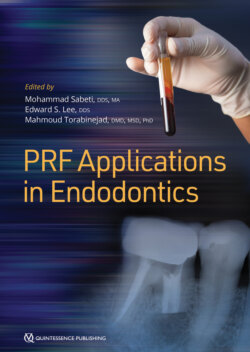Читать книгу PRF Applications in Endodontics - Mahmoud Torabinejad - Страница 14
Importance of the secretome
ОглавлениеThe therapeutic effectiveness of MSCs is well documented, especially as it pertains to wound healing. However, the mechanisms of action are not well understood. Stem cells are partially defined as cells that are capable of differentiation into a variety of specialized somatic cells, and this knowledge has fueled speculation that cell differentiation upon engraftment is responsible for the observed therapeutic effects. On further investigation, it would appear that this is not the case.
Recent research has shown that MSCs introduced therapeutically primarily function through trophic and immunomodulatory signaling pathways, and the stem and progenitor cells of the host actually do most of the work.10 This is why the secretome, or the collection of bioactive molecules secreted from the cells, has been receiving more attention from researchers. Rich in growth factors and cytokines that are associated with modulating inflammation and promoting angiogenesis, the MSC secretome seems perfectly suited to enhance wound healing. This is evidenced in human physiology by the ability of MSCs to zero in on areas of inflammation and injury and secrete bioactive factors.11
The regenerative effects of growth factors and cytokines have been well documented in dentistry. Peptides in the transforming growth factor β (TGF-β), bone morphogenetic protein (BMP), fibroblast growth factor (FGF), and interleukin (IL) families are crucial components driving regeneration, especially as it relates to bone growth.12 These factors stimulate host cells in regenerative pathways, but it can be challenging to maintain dosing and ensure efficient cell uptake of these factors therapeutically. The MSC secretome is rich in many of these peptides, suggesting that the secretome could be responsible for some of the observed therapeutic effects.13
